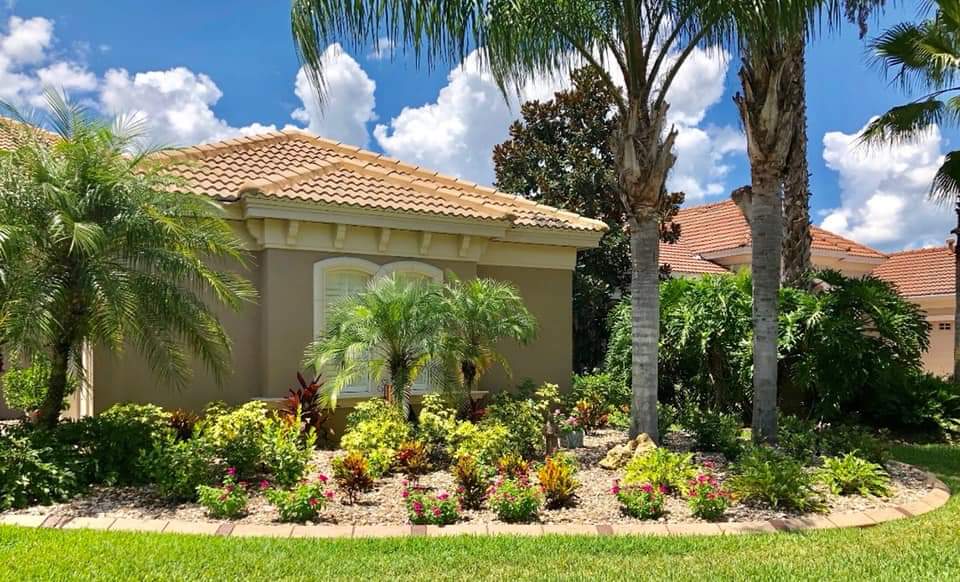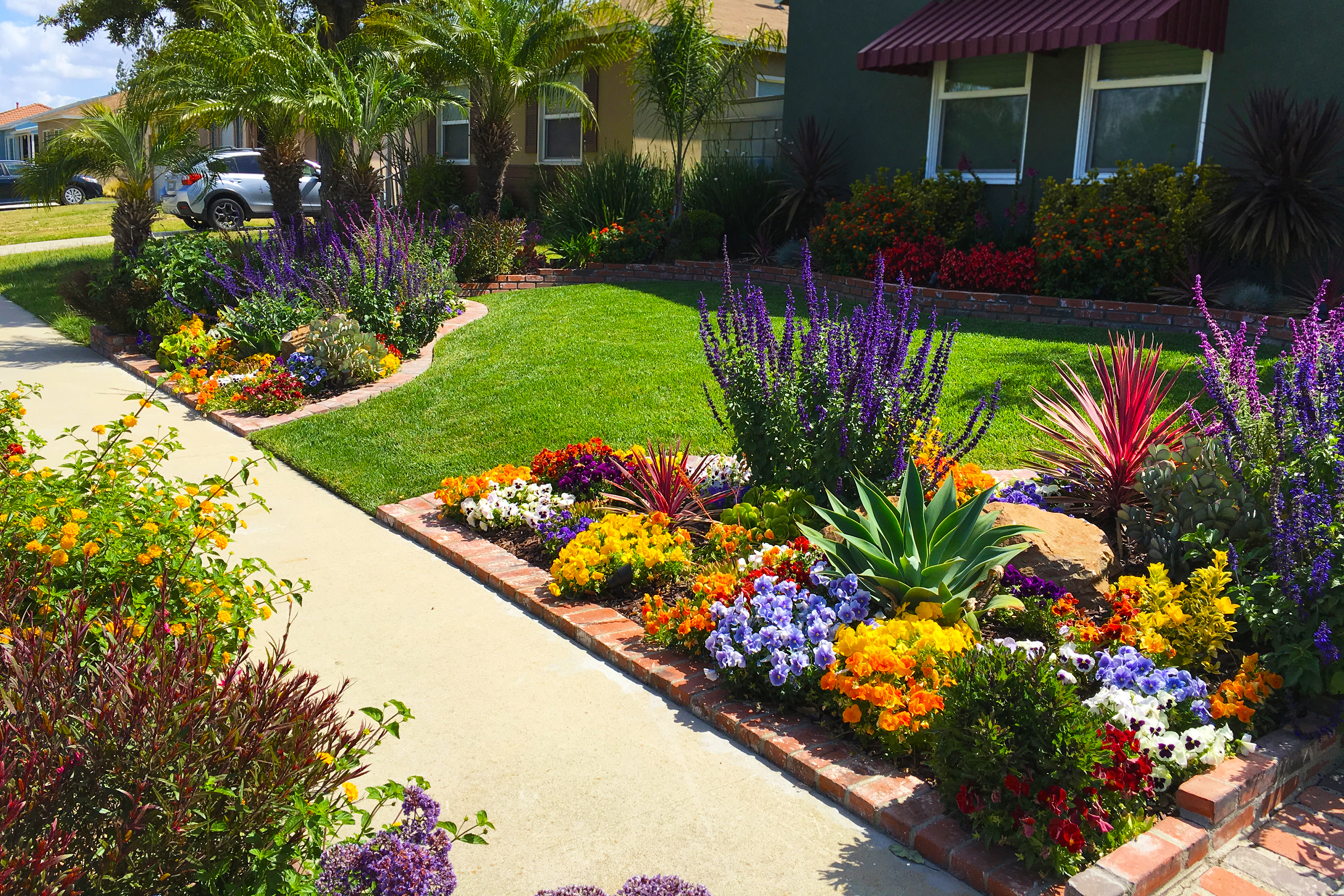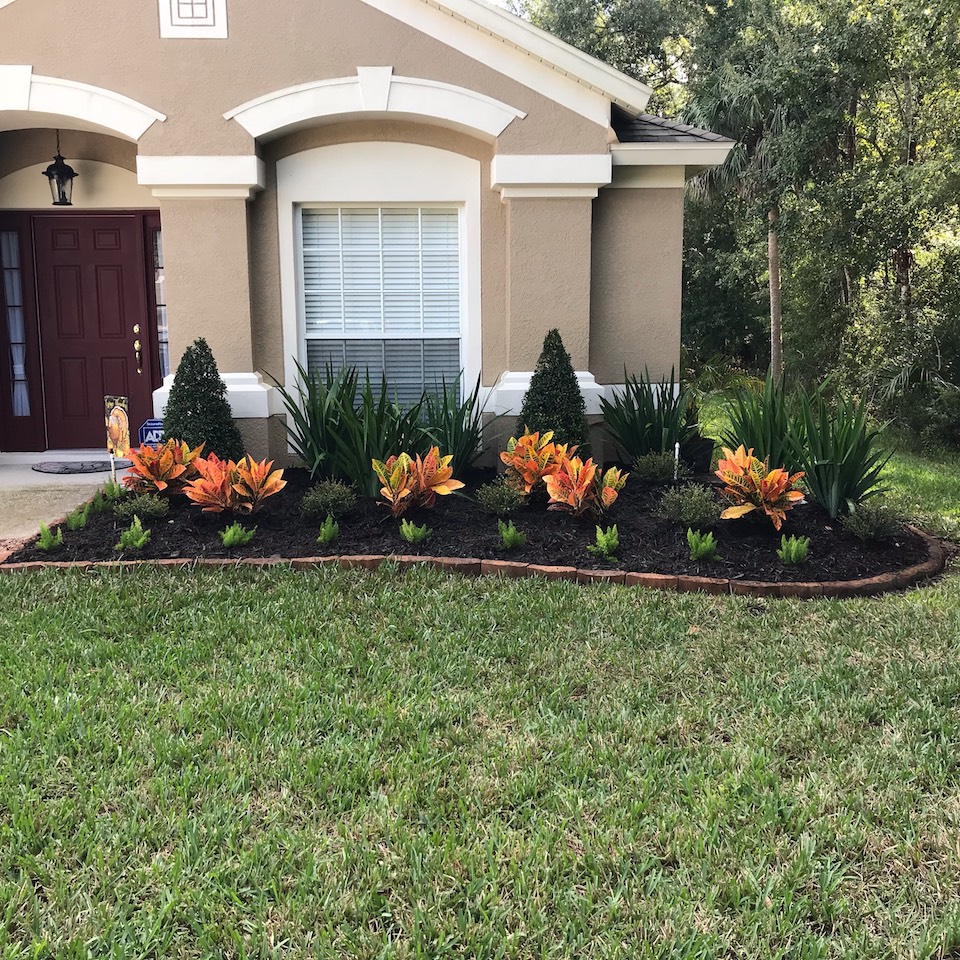Transform Your Exterior Room with Specialist Palm Desert Landscaping Solutions
Exactly How to Change Your Outside Locations Via Thoughtful Landscape Design Techniques and concepts
Transforming outside locations through thoughtful landscaping requires a calculated approach, starting with a mindful analysis of the existing room and its designated purpose. By picking appropriate plants and integrating useful features, one can produce a welcoming atmosphere that boosts both visual appeal and functionality. Nevertheless, the subtleties of style-- such as the interaction of pathways, patios, and illumination-- are frequently forgotten yet play an important duty in the general improvement. Discovering these aspects further might disclose the trick to accomplishing a cohesive outside refuge that reverberates with your vision.
Evaluating Your Outdoor Space

Next, consider the environment of your area, as it will certainly figure out the kinds of materials and plants suitable for your landscape. Additionally, assess how you intend to utilize the space-- whether for entertaining, gardening, or leisure-- to ensure that the layout can fit these activities. It's likewise valuable to examine the surrounding setting, including surrounding properties, to determine possible constraints or opportunities for improving personal privacy and looks.
Selecting the Right Plant Kingdoms
Choosing the right plants is important for developing a harmonious and lasting landscape that flourishes in your certain environment. To start, examine your regional environment, soil type, and sunshine accessibility. Comprehending these factors will certainly direct you in picking plants that are appropriate for your outside room.
Take into consideration native plants, as they are adapted to the regional ecosystem and need less plant food, maintenance, and water. Including a mix of perennials, annuals, hedges, and trees can produce aesthetic interest and assistance neighborhood wild animals. Search for plants with varying shades, appearances, and elevations to improve the aesthetic allure of your landscape.
Additionally, think about the seasonality of plants. Selecting varieties that grow at different times throughout the year ensures that your garden continues to be vibrant and engaging throughout all periods. When intending your format, team plants with similar water and sunlight needs to produce a more reliable watering regimen.
Incorporating Useful Attributes
While looks play a substantial duty in landscaping, including functional attributes is necessary for creating a practical and delightful exterior space. These elements not just enhance the functionality of your area yet also add to its overall allure.

Water features, such as fish ponds or fountains, can serve a double objective by providing a tranquil setting while also bring in regional wild animals. Purposefully placed storage space services, like yard sheds or benches with covert compartments, can assist keep a tidy environment, making sure mess does not detract from the beauty of your landscape.
Last but not least, think about the integration of irrigation systems to simplify maintenance and promote the health and wellness of your plants. Palm Desert Landscaping. By attentively incorporating these functional functions, you can produce an outside atmosphere that is not only aesthetically attractive but also customized to your lifestyle requires
Designing Pathways and Patios
Creating a natural outside environment involves not only functional attributes however also properly designed paths and patios that boost connectivity and usability. Pathways serve as the arteries of your landscape, directing activity and establishing circulation.
Patios, on the various other hand, serve as outside living rooms that motivate social interaction and relaxation. Their layout needs to reflect the designated usage, whether for eating, lounging, or amusing. Integrating components like integrated seating, fire pits, or pergolas can elevate the area, making it a lot more inviting.
Tactically placing paths and outdoor patios can also develop visual rate of interest and specify various locations within your outdoor space - Palm Desert Landscaping. Utilize curves and shapes to soften rigid lines and improve the landscape's all-natural beauty. By attentively incorporating these features, you not just enhance performance but additionally establish an unified atmosphere that invites exploration and satisfaction
Enhancing Outdoor Lighting

Ambient lights functions as the foundation, lighting basic locations with fixtures such as wall-mounted sconces or overhead string lights. This creates a warm and welcoming environment for gatherings. Task illumination, on the other hand, concentrates on particular locations where activities occur, such as enlightening pathways or seating locations with limelights or lanterns, guaranteeing safety and security and functionality.
Accent illumination adds drama and highlights focal factors, such as trees, sculptures, or architectural visit here attributes. This can be accomplished making use of uplights or well lights purposefully placed to article source draw interest and create visual passion.
Along with capability, take into consideration the visual top qualities of your components. Pick energy-efficient LED choices to reduce power intake while preserving the desired result. By thoughtfully integrating outside lighting, you can boost the charm of your landscape, developing an enchanting atmosphere for night enjoyment.
Final Thought
In final thought, changing outside areas via thoughtful landscaping needs a thorough approach that includes evaluating the existing room, picking appropriate plants, and incorporating useful attributes. The layout of outdoor patios and pathways adds to general functionality, while enhanced outside lighting produces a welcoming atmosphere - Palm Desert Landscaping. By carrying out these techniques, a lasting and aesthetically pleasing setting can be attained, ultimately fostering an area that is both satisfying and unified for users

Changing exterior areas with thoughtful landscape design requires a strategic strategy, beginning with a careful evaluation of the existing room and its desired purpose. Begin by observing the existing attributes of your outside location, including the topography, soil high quality, drainage patterns, and direct exposure to sunshine.Tactically putting patios and paths can likewise create aesthetic interest and specify different areas within your outside area. Well-planned lights can change your exterior locations, supplying safety and security, safety and security, and visual charm after sunset.In conclusion, changing outside areas look at this web-site with thoughtful landscaping needs a comprehensive approach that includes analyzing the existing area, selecting suitable plants, and incorporating useful attributes.